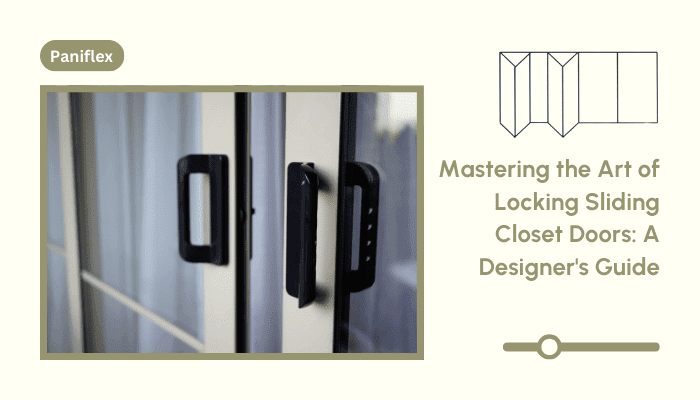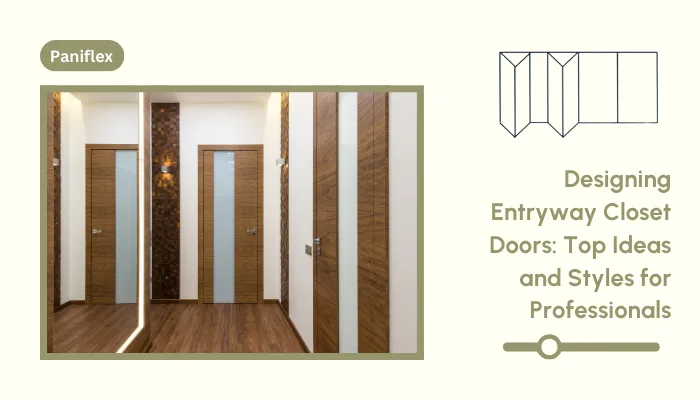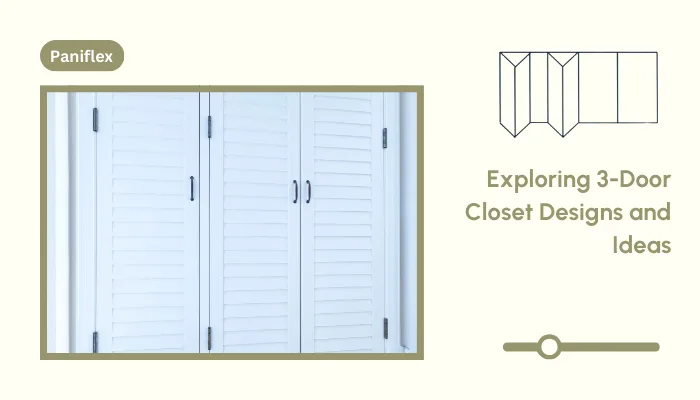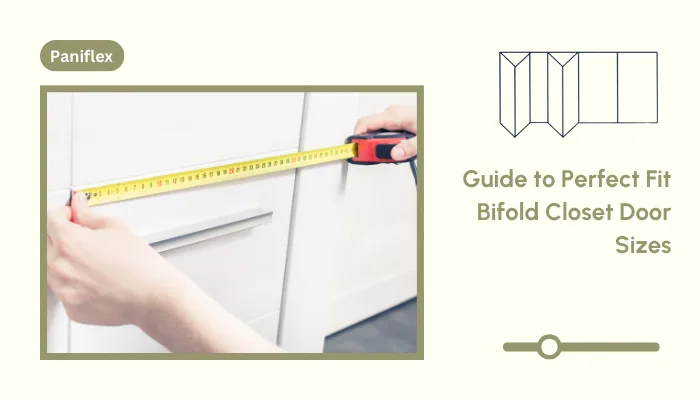Picture this: You’ve just put the finishing touches on a stunning main bedroom design. The custom-built walk-in closet is a masterpiece of organization and style. But one tiny detail threatens to unravel your vision – the client asks, “How do we keep these sliding doors secure?”
As an interior designer or architect, you know that even the tiniest oversight can compromise the functionality and beauty of your creations. That’s why learning to lock sliding closet doors is crucial in your professional toolkit. It’s not just about security; it’s about elevating your designs to meet every client’s need, from aesthetics to practicality.
This guide will unlock the secrets of securing sliding closet doors and explore innovative solutions that seamlessly blend form and function. Whether working on a luxurious penthouse or a compact urban apartment, you’ll discover how to transform a potential design weakness into a standout feature. Let’s slide into the world of closet door security and take your projects to the next level.
Ready to experience the benefits of custom closet doors? Explore our range of Paniflex products now.
Understanding Sliding Closet Doors
Before we discuss locking mechanisms, let’s familiarize ourselves with the design canvas we’re working with. Sliding closet doors are the unsung heroes of space-saving design, offering a clean, streamlined look perfect for modern interiors.
Types of Sliding Doors
- Bypass doors: These are the classic sliding doors that overlap on parallel tracks. They’re ideal for wide closet openings and offer complete access to the closet contents.
- Pocket doors: For a truly seamless look, pocket doors slide right into the wall cavity. They’re perfect for creating an uninterrupted visual flow in a room.
- Barn-style doors: A trendy option that adds rustic charm, these doors slide along a single track mounted above the doorway. They’re a statement piece in themselves.
- Bifold sliding doors: These accordion-style doors combine the benefits of sliding and folding mechanisms, which are ideal for smaller spaces.
Also Read: Designing Bedroom Closet Ideas You’ll Love
Most sliding closet doors are crafted from lightweight materials like hollow-core wood, aluminum, or even glass, which presents unique challenges when it comes to security. Your expertise in locking sliding closet doors becomes invaluable.
The Critical Need for Locking Systems
You might wonder, “Why bother with locks on closet doors?” It’s a valid question and one your clients might ask, too. Here’s where you can showcase your expertise:
- Privacy in shared spaces: Locked closets provide personal space for each individual in multi-occupancy homes or guest rooms.
- Securing valuables: Many clients use closets to store more than clothes. They might have jewelry, essential documents, or even collectibles.
- Childproofing: For families with young children, locked closets can prevent accidents and keep dangerous items out of reach.
- Maintaining order in commercial spaces: Secured storage areas are essential for inventory control and confidentiality in retail or office environments.
- Aesthetic consistency: A well-designed locking system can enhance the overall look of the closet, adding a touch of sophistication.
By anticipating these needs and offering solutions that enhance security and design, you’re not just solving a problem—you’re adding value to your services. Partnerships with companies like Paniflex can be game-changers, allowing you to integrate locking mechanisms seamlessly into custom door designs.
Navigating the Challenges in Finding Suitable Locking Hardware
The journey to find the perfect solution can be fraught with obstacles when locking sliding closet doors. Let’s explore these challenges and how to overcome them:
Market Research Findings
Recent market studies have revealed a significant gap in the availability of aesthetically pleasing and secure locking mechanisms for sliding doors. Many existing products need to be improved in either form or function, leaving designers quandary.
- Limited options: The market is saturated with generic, one-size-fits-all solutions that often clash with high-end interior designs.
- Functionality vs. aesthetics: Many available locks prioritize security at the expense of visual appeal, or vice versa.
- Installation complexities: Some locking systems require extensive modifications to the door or frame, complicating the installation process.
- Durability concerns: Cheaper locking options often wear out quickly, especially on frequently used closet doors.
- Compatibility issues: Not all locking systems work with every type of sliding door, limiting design choices.
Also Read: The 6-Step Process of Interior Design Project
These challenges present an opportunity for innovation. By partnering with specialized manufacturers like Paniflex, you can access custom solutions that address these issues head-on, offering clients the perfect blend of security and style.
Innovative Types of Locking Mechanisms for Sliding Closet Doors
Now that we understand the challenges, let’s explore the various locking options available. Each type has its own set of advantages, and knowing how to lock sliding closet doors with these mechanisms will give you a competitive edge:
1. Top-Mount Locks
You install these locks at the top of the door, keeping them out of sight but easily accessible. They’re ideal for maintaining a clean look while providing security.
Pros:
- Discreet appearance
- Easy to install without modifying the door panel
- Suitable for most sliding door types
Cons:
- It may not be easy to reach shorter individuals
- It can be less secure than some other options
2. Bottom-Mount Locks
You install these at the bottom of the door; they can be more discreet but may require bending down to operate.
Pros:
- Very discreet, almost invisible when the door is closed
- It can be pretty secure, especially when paired with a top-lock
Cons:
- Less convenient to operate
- May collect dust or debris over time
3. Inside-Mounted Locks
You install these locks between the panels, which is perfect for bypass doors. They offer a sleek solution that doesn’t interfere with the door’s exterior appearance.
Pros:
- Completely hidden from view
- Ideal for maintaining a minimalist aesthetic
- It can be very secure when properly installed
Cons:
- Installation can be more complex
- It may require custom door panels
4. Back-Mounted Locks
These locks are mounted on the back of one door panel, engaging them with the adjacent panel or track. They’re an excellent option for a clean, modern look.
Pros:
- Invisible from the front
- It can be very secure
- Suitable for various door materials
Cons:
- It may require reaching around the door to operate
- Installation can affect door alignment if not done properly
5. Smart Locks
For tech-savvy clients, consider incorporating innovative locking systems that can be controlled via smartphone or integrated into home automation systems.
Pros:
- High-tech appeal
- Convenient keyless operation
- It can be integrated with other smart home features
Cons:
- More expensive than traditional locks
- It may require periodic battery changes or updates
Also Read: Common Door Materials and Their Purpose
When selecting a locking mechanism, consider factors such as the door material, frequency of use, and overall design aesthetic. Paniflex offers customization options that allow you to integrate these locking mechanisms seamlessly into their sliding door designs, ensuring both security and style.
DIY Locking Solutions: A Double-Edged Sword
While professional solutions often yield the best results, some clients may express interest in DIY options for locking sliding closet doors. It’s essential to understand this approach’s appeal and potential pitfalls.
Tools and Materials Needed:
- Drill with appropriate bits
- Screwdriver set
- Measuring tape
- Pencil or marker
- Level
- Lock mechanism of choice (e.g., hasp and padlock, sliding bolt lock)
- Screws and anchors (if needed)
- Safety glasses
Step-by-Step Guide:
- Measure and mark the position of the lock, ensuring it aligns appropriately when the door is closed.
- Use a level to ensure your markings are straight.
- Drill pilot holes if necessary, being careful not to damage the door.
- Install the lock mechanism according to manufacturer instructions.
- Test the lock for smooth operation and security.
- Make any necessary adjustments to ensure proper alignment and function.
Also Read: Expert Guide: Door Hardware Installation for Modern Design Professionals
Pros and Cons of DIY Solutions
Pros:
- Cost-effective for budget-conscious clients
- Allows for immediate implementation
- It can be a satisfying project for hands-on homeowners
Cons:
- May lack the sophistication and durability of professional solutions
- Improper installation can lead to damaged doors or compromised security
- Often doesn’t match the quality of the overall design
- Can void warranties on custom doors
While DIY solutions can be tempting, they may only sometimes meet your clients’ high standards or your professional design vision. Professional installation of high-end locking systems is often the better choice for projects where quality and consistency are paramount.
The Art of Professional Installation
Professional installation can make all the difference when it comes to how to lock sliding closet doors. Here’s what you and your clients can expect from a top-tier installation process:
1. Preparation
- A thorough assessment of the door type, material, and surrounding structure
- Selection of the most appropriate locking mechanism based on security needs and design aesthetics
- Gathering all necessary tools and hardware, ensuring everything is on hand before beginning
2. Installation Steps
- Precise measurements and marking, often using laser levels for perfect alignment
- Careful drilling and cutting, with particular attention to not damaging the door or surrounding areas
- Secure attachment of the lock, using reinforced mounting when necessary
- Installation of any additional components like strike plates or catches
3. Testing and Quality Assurance
- Rigorous testing of the lock for smooth operation
- Security checks to ensure the lock performs its primary function effectively
- Aesthetic inspection to confirm the installation meets design standards
- Final adjustments to perfect the balance between security and ease of use
4. Client Education
- Demonstration of proper lock operation
- Guidance on maintenance and care
- Provision of warranty information and support contacts
Also Read: Sliding Door Installation: Start to Finish Guide 2024
If you choose Paniflex for your sliding closet door needs, they guarantee a professional installation that integrates seamlessly with your design vision. Their team of skilled technicians understands the nuances of how to lock sliding closet doors in a way that enhances rather than detracts from your overall design.
Maintaining Security and Style: Upkeep Tips
Knowing how to lock sliding closet doors is just the beginning. Proper maintenance is critical to ensuring long-lasting security and functionality. Here are some expert tips you can share with your clients:
- Regular cleaning:
- Wipe down tracks and rollers monthly to prevent debris buildup.
- Use a vacuum with a brush attachment to remove dust from locking mechanisms.
- Lubrication:
- Apply a dry lubricant to moving parts every 3-6 months.
- Avoid using oil-based lubricants, as they can attract dust and grime.
- Hardware check:
- Tighten screws and fittings quarterly or as needed.
- Inspect for any wear or damage, especially on frequently used doors.
- Alignment adjustments:
- Check door alignment annually, adjusting rollers or tracks if necessary.
- Ensure locks engage smoothly without forcing.
- Professional servicing:
- Schedule annual inspections by a professional for high-security or complex locking systems.
- Address any issues promptly to prevent further damage or security risks.
Also Read: Elevate Your Designs: Top Alternatives to Sliding Glass Patio Doors
By incorporating these maintenance tips into your client handover process, you ensure that the beautiful, secure closet doors you’ve designed stay that way for years.
Ready to experience the benefits of custom closet doors? Explore our range of Paniflex products now.
Conclusion: Elevating Your Designs with Secure Sliding Doors
Mastering how to lock sliding closet doors is more than a technical skill – it’s an opportunity to elevate your designs and exceed client expectations. By integrating sophisticated locking mechanisms into your closet designs, you’re not just solving a security issue; you’re enhancing the overall functionality and appeal of the space.
Remember, the best solutions blend seamlessly with your design vision while providing the security and peace of mind your clients crave. Whether working on a luxurious main suite or a compact urban apartment, the right locking system can be the finishing touch that sets your work apart.Ready to take your sliding closet door designs to the next level? Explore Paniflex’s range of customizable options and locking solutions. Their innovative designs and professional installation services can help bring your vision to life while ensuring top-notch security for your clients. Contact Paniflex today for a consultation and discover how to transform sliding closet doors from a potential design challenge into a standout feature in your next project.






